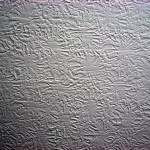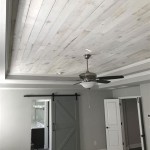Noise in a basement can be annoying, especially if you’re trying to enjoy a movie or a good book. But don’t fret; sound insulation for basement ceilings is an easy and effective way to keep your basement peaceful and quiet. In this article, we’ll explore the best sound insulation for your basement ceiling and provide helpful tips for getting the most out of your sound insulation.
Types of Sound Insulation for Basement Ceilings
When it comes to sound insulation, there are a few different types to consider. The most popular sound insulation materials for basement ceilings are fiberglass, foam, and mineral wool. Each of these materials has their own benefits and drawbacks, so it’s important to consider your needs when deciding which one is right for you.
Fiberglass
Fiberglass is a popular option when it comes to sound insulation. It’s easy to install and provides good noise reduction. However, it’s not the most effective at blocking out sound. It also has a tendency to absorb moisture, which can lead to mold and mildew buildup.
Foam
Foam is another popular choice for sound insulation. It’s highly effective at blocking out sound and is easy to install. It also has the added benefit of being fire-resistant, which is an important consideration if you’re using it in a basement. The downside of foam is that it can be more costly than other sound insulation materials.
Mineral Wool
Mineral wool is an effective sound insulation material for basement ceilings. It’s highly effective at blocking out sound and is also fire-resistant. It’s easy to install, but it can be more expensive than other materials. It’s also not as effective at blocking out moisture as foam.
Tips for Installing Sound Insulation in Basement Ceilings
Once you’ve chosen the right sound insulation material, it’s time to install it. Here are a few tips to keep in mind when installing sound insulation in basement ceilings:
- Be sure to measure your basement ceiling before you buy your sound insulation. This will ensure that you purchase the right amount of material.
- Install the sound insulation according to the manufacturer’s instructions. This will ensure that it’s installed properly and will last for years.
- Seal all seams between the insulation and the ceiling. This will help prevent moisture from seeping through and will help keep your basement dry.
- Use acoustic sealant around the edges of the insulation. This will ensure that sound is blocked from entering or exiting your basement.
- Choose the right type of sound insulation for your basement. Different materials will provide different levels of soundproofing, so be sure to choose the right one for your needs.
Conclusion
Sound insulation for basement ceilings is an easy and effective way to keep your basement peaceful and quiet. There are a few different materials to choose from, and each has its own benefits and drawbacks. Be sure to consider your needs when choosing the best sound insulation for your basement ceiling and follow the tips outlined above for proper installation.














Related Posts









